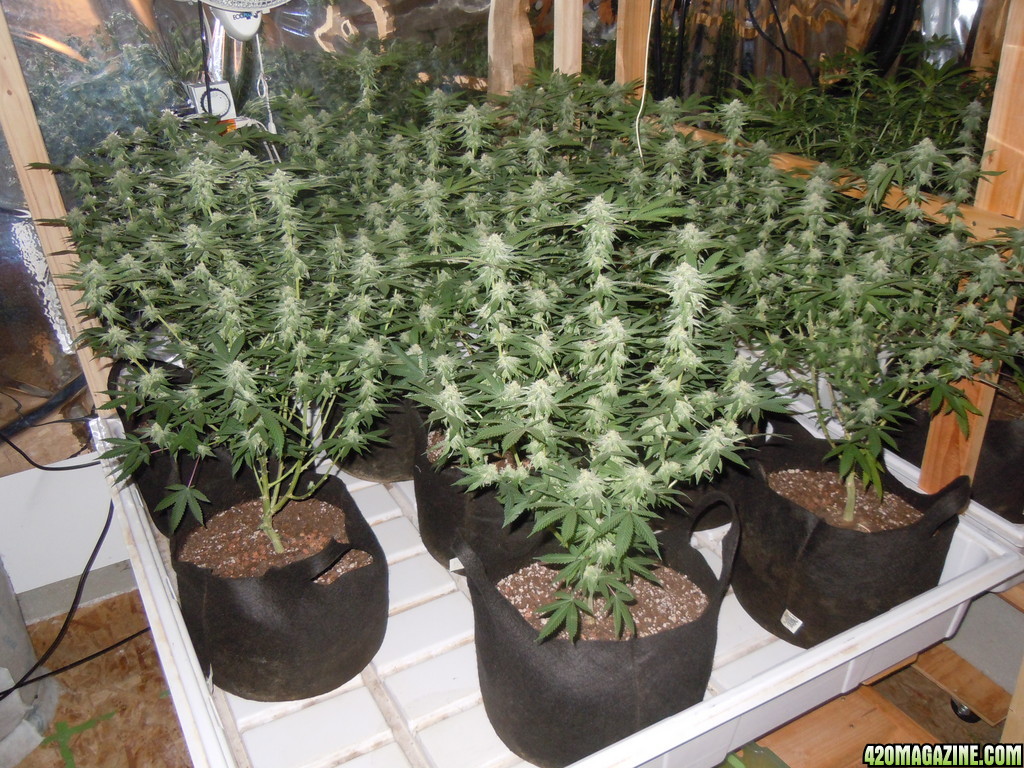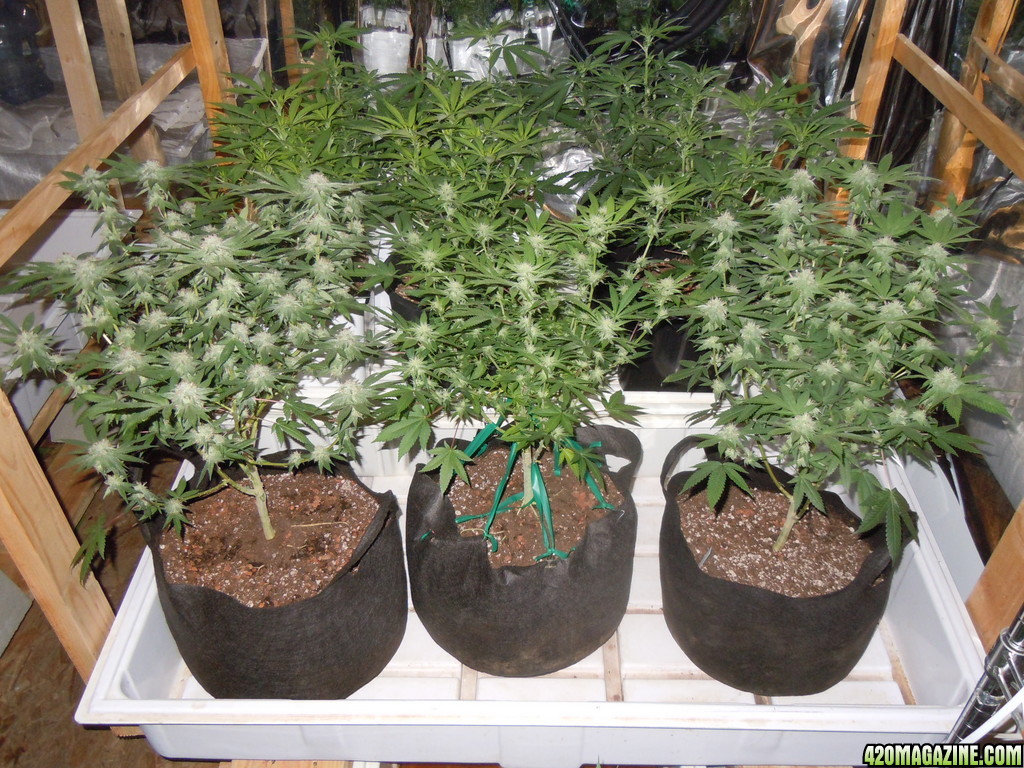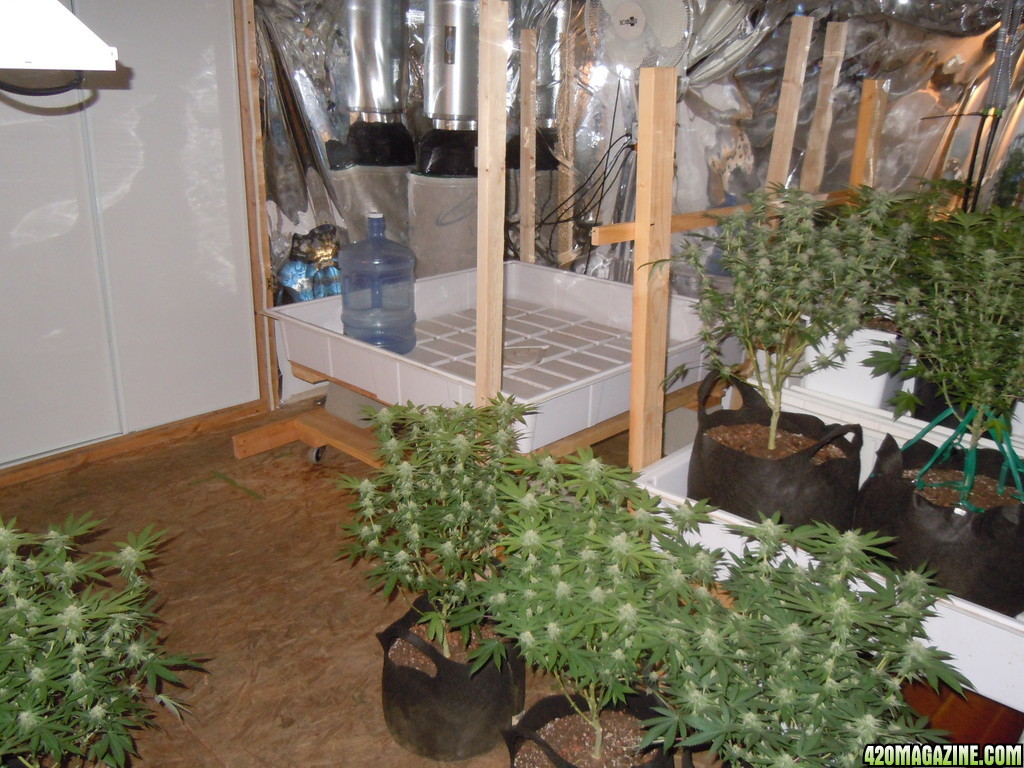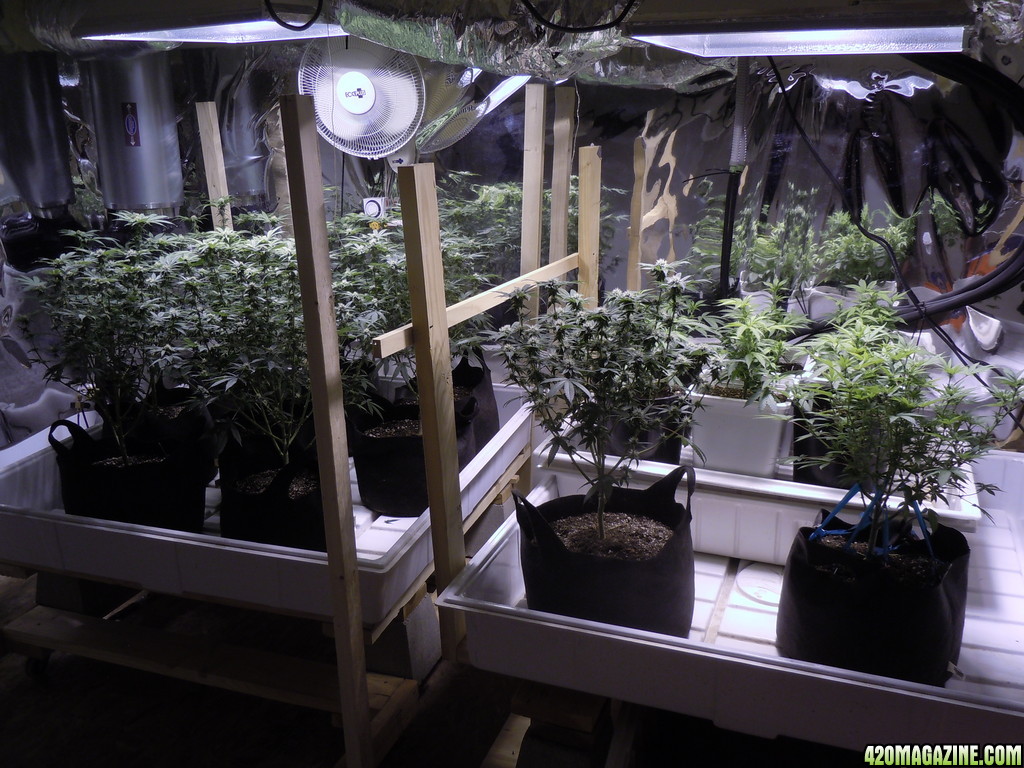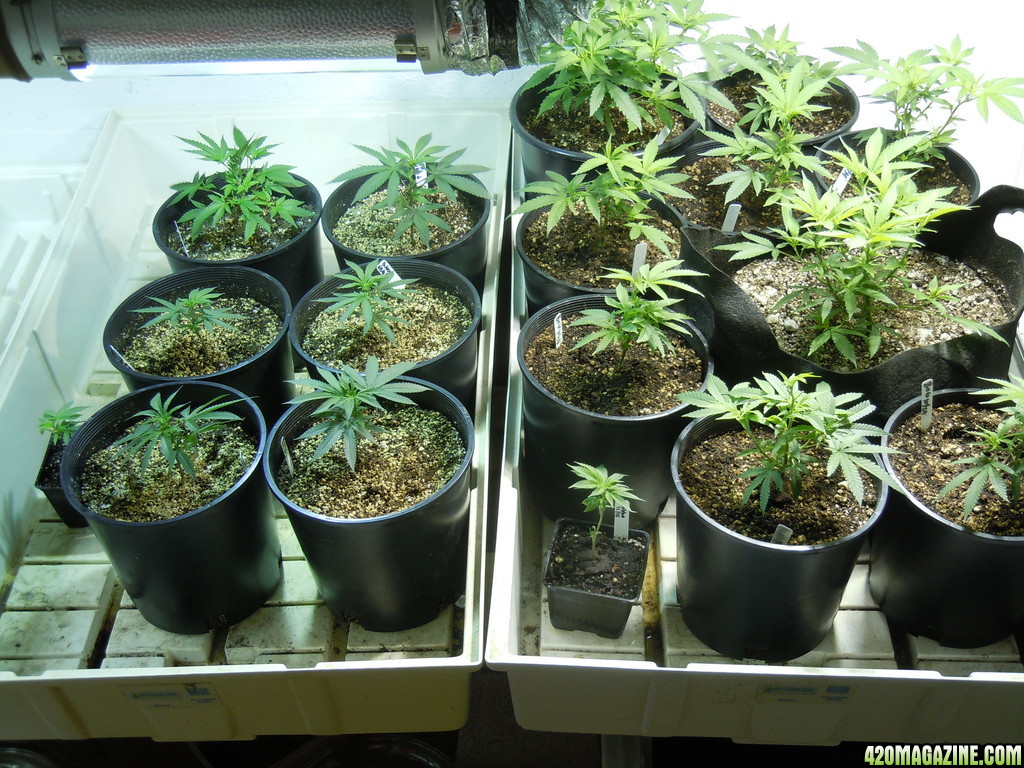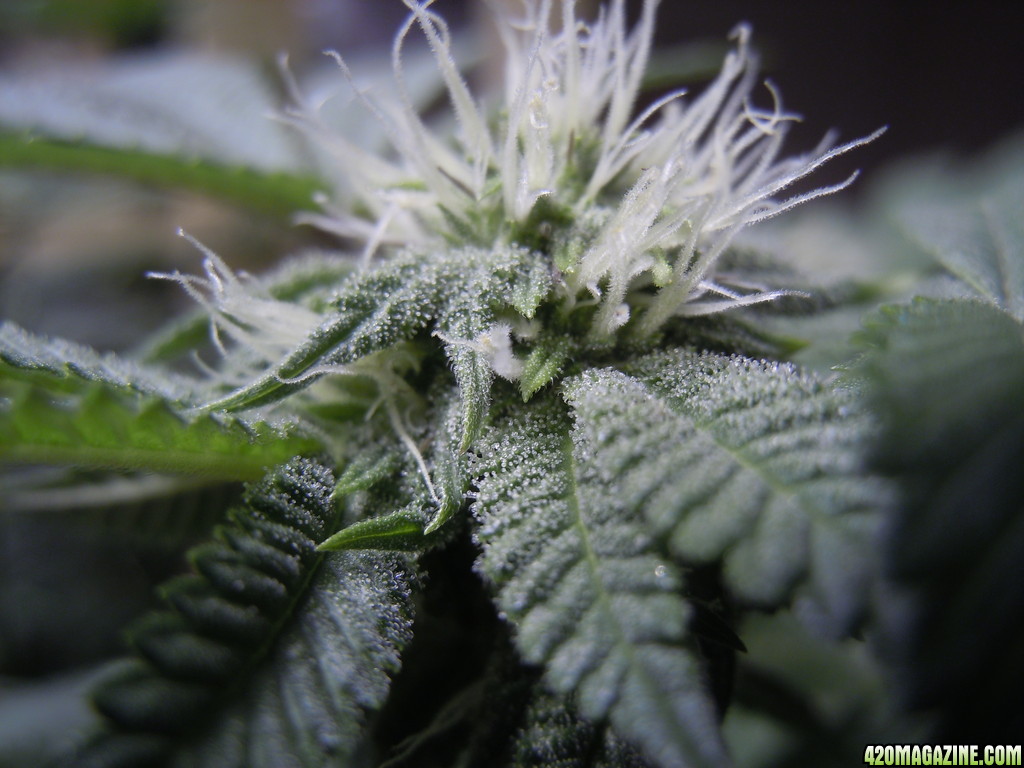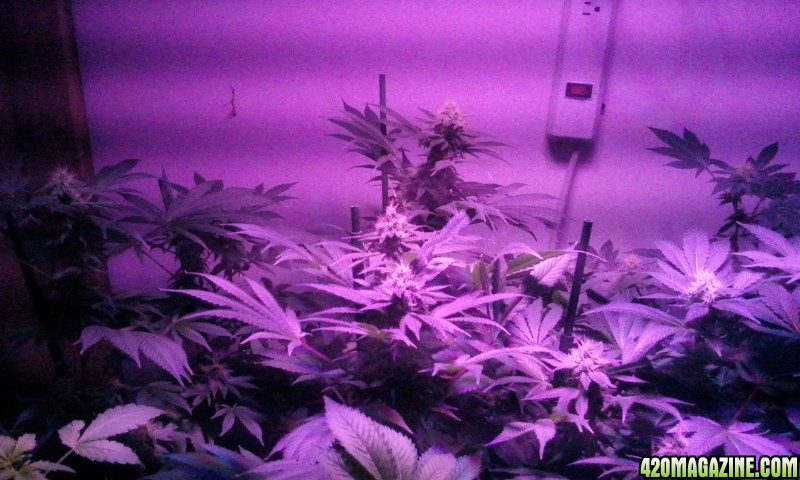Here's info from their website on the Cloud4
Name:LED Grow Light
LED grow lights allow production of bright, and long lasting grow lights that emit only the wavelengths of light corresponding to the absorption peaks of a plant's typical photochemical processes. Compared to other types of grow lights, LEDs for indoor plants are attractive because they do not require ballasts and produce considerably less heat than fluorescent lights, LED's usually run at around 45 to 60 degrees celsius and a slow airflow keeps them at their operating temperature. Also, plants under LEDs transpire less, as a result of the reduction in heat, and thus the time between watering cycles is longer.
There are multiple absorption peaks for chlorophyll and carotenoids, and LED grow-lights may use one or more LED colors overlapping these peaks.
It is also often published that for vegetative growth, blue LEDs are preferred, where the light has a wavelength somewhere in the mid-400 nm (nanometers). For growing fruits or flowers, a greater proportion of red LEDs is considered preferable, with light very near 600-640 nm, the exact number this wavelength being much more critical than for the blue LED.
Early LED grow lights used hundreds of fractional-watt LEDs and were often not bright enough and/or efficient enough to be effective replacements for HID lights. Newer advanced LED grow lights may use high-brightness multiple-watt LEDs, with growing results similar to HID lights.
Grow light LEDs are increasing in power consumption resulting in increased effectiveness of the technology. LEDs used in previous designs were 1/3rd to 1 watt in power. However, 3-watt and even 5-watt LEDs are now commonly used in LED grow lights. LED grow lights are now being produced which exceed 1200 watts.
Recent experiments show that providing plants with white LED is also viable because LED colour is achieved by using different compounds during manufacture, thus it is possible to give all the wavelengths required with a white LED




